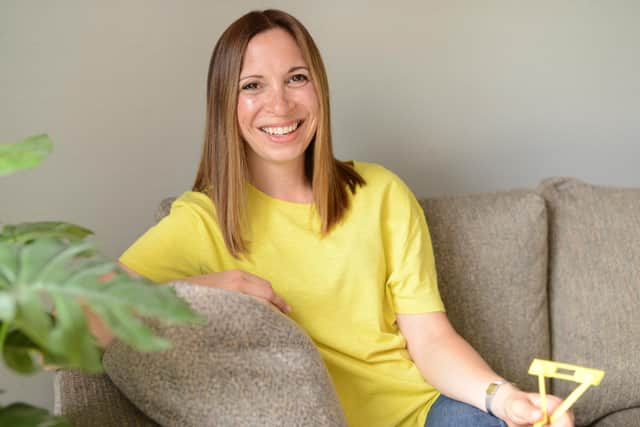Northampton mum who had to reach an agreement with Microsoft set to launch product for children with dyslexia
and live on Freeview channel 276
A Northampton mum who had to reach an agreement with Microsoft is now able to launch her product for children with dyslexia and reading difficulties.
Kate McKenzie, 40, developed Word Window, a small handheld device which breaks words down into smaller chunks by attaching it to the top of books – and helps with transitioning from phonics to reading in early school years.
Advertisement
Hide AdAdvertisement
Hide AdThe product was set to launch in July, but Kate received a letter from Microsoft nine days ahead of the planned launch saying they opposed her trademark.


After winning the battle months later, Word Window will now launch on October 8 during National Dyslexia Awareness Week.
Kate said: “I couldn’t believe little old me could attract the attention of a big company like that, so the bright side is I must really have something.”
As a teacher and someone who has been diagnosed with dyslexia herself, Kate did not expect to encounter any struggles when helping her son learn to read.
Advertisement
Hide AdAdvertisement
Hide Ad“I struggled, as did my son,” she said. “And that meant reading books at home wasn’t fun and it was stressful for both of us.
“He was excited to bring book homes to begin with, but he found it tricky.
“I didn’t deal with it well to begin with and he lost confidence because of it.”
Kate did some research and was quick to find out about the staggering success of phonics – which breaks words down to allow everyone to identify and blend sounds together.
Advertisement
Hide AdAdvertisement
Hide AdShe said: “Taking a step back made me realise reading is about having fun, taking the pressure off, and trying to pick out letters and sounds I knew my son had been learning at school.”
Word Window works by squeezing a handle to make a window bigger and smaller around different letters, words and sounds.
It pieces together the phonics children are already learning, and bridges the gap between phonics and reading.
After developing the product, Kate was supported by educational and dyslexia specialists – as well as teachers and parents – who all gave “very positive feedback”.
Advertisement
Hide AdAdvertisement
Hide AdIt has shown this product helps the teaching of the alphabet, sounds in words, spelling, and patterns of sentence structure, which will be helpful for any child learning to read and anyone struggling with breaking down words.
Kate is hosting a launch for Word Window at Northamptonshire Central Library from 2.30pm until 3.30pm on October 8.
The founder will be giving away goodie bags, demonstrating Word Window, and sharing top tips on how parents can spot the signs of dyslexia early – allowing them to “support their children on a happier reading journey”.
Word Window first began when Kate’s son was five, and it has been a four-year journey to get to this point.
Advertisement
Hide AdAdvertisement
Hide AdThe first couple of years Kate researched and experimented with solving her personal problems with reading and dyslexia.
She then began developing the concept for the business until Covid-19 struck, and the development of the handheld device began during the pandemic.
It was in October 2020 when Kate filed the patent and although it has been a long process, she has “learned a lot along the way” and the product has improved.
